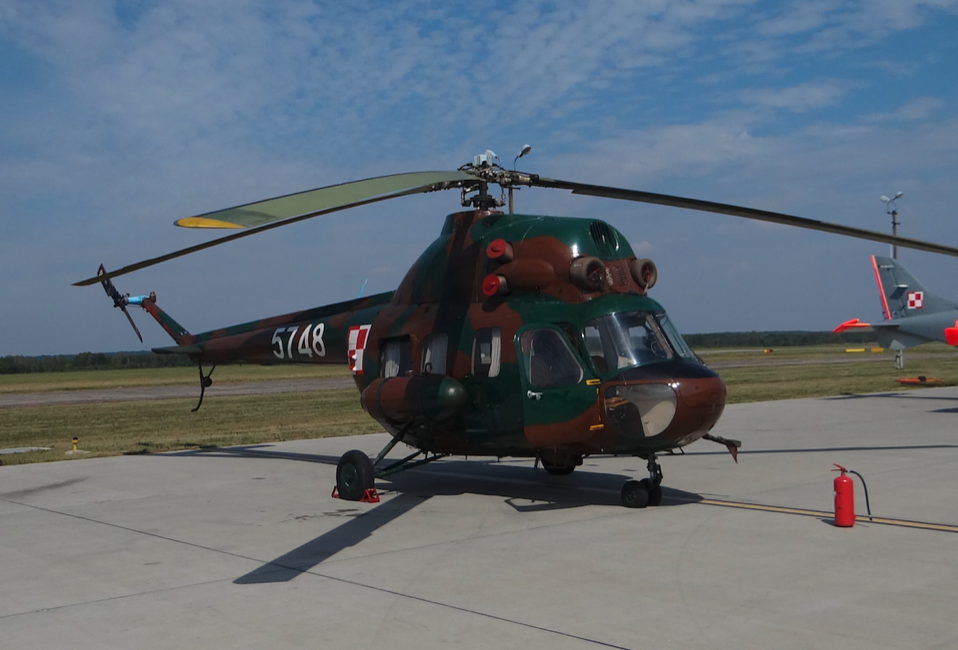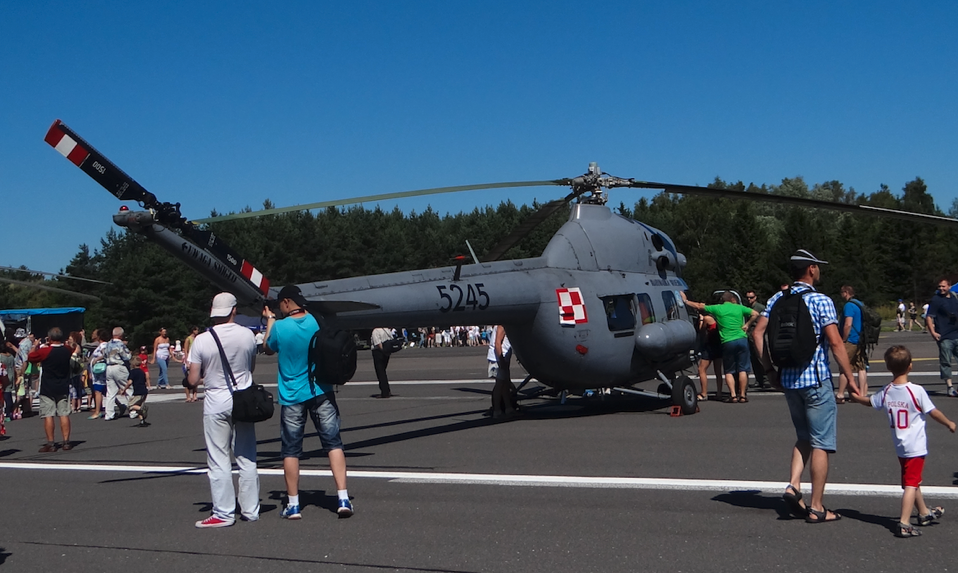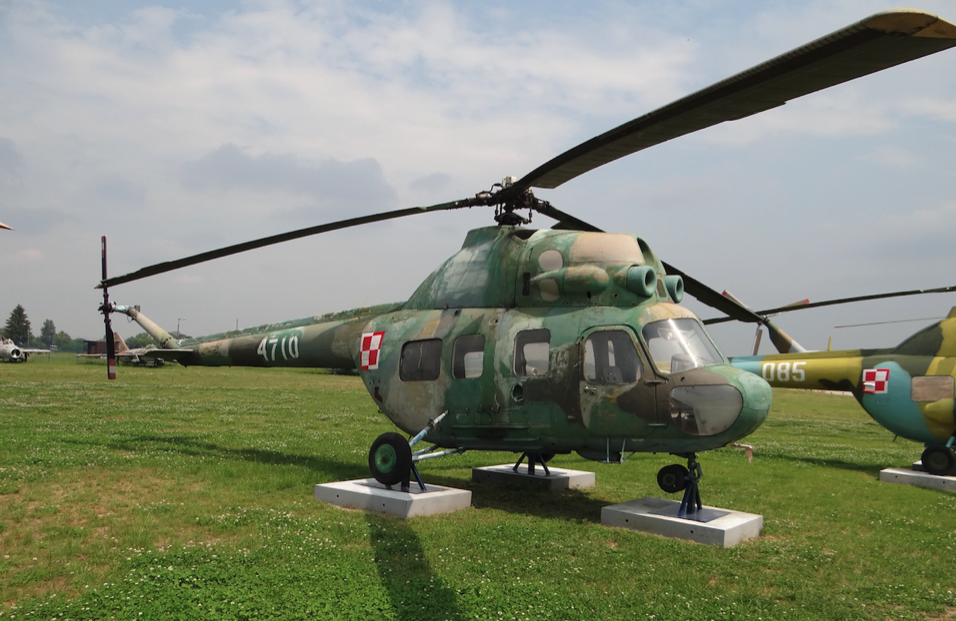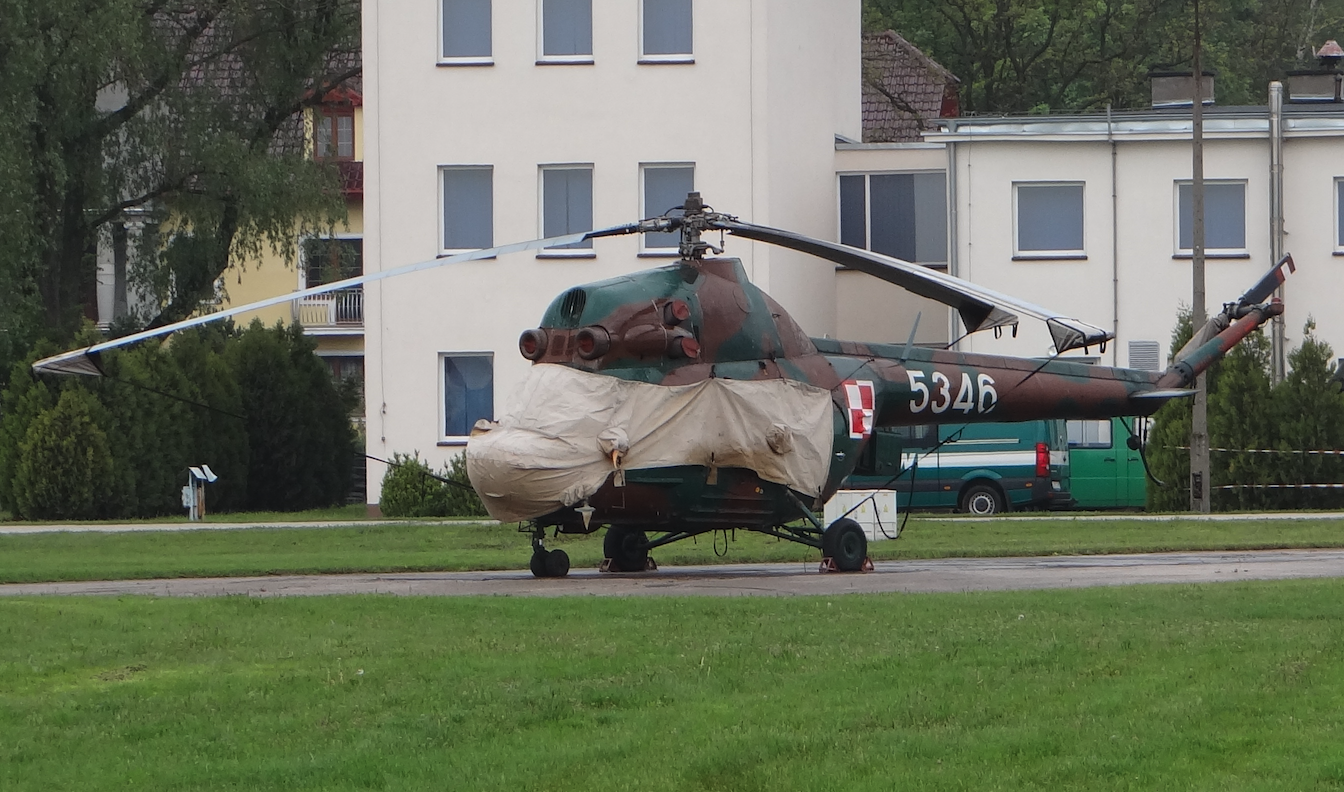Kraków 2018-01-10
193a Section 1966-12-29
PZL WSK Świdnik Mi-2
Poland
History of the PZL Mi-2 in the Polish Army.
PZL Mi-2. 1966 year.
On December 29, 1966, the 74th Liaison-Sanitary Aviation Regiment adopted the first Mi-2 helicopter, starting its service in the Polish Army, which continues to this day (2018). The helicopters did not stand out from the civilian Mi-2 T helicopters, designed to carry 8 people or cargo weighing up to 700 kg inside the cabin. The Mi-2 T helicopter was named Wiarus.
Written by Karol Placha Hetman
Kraków 2018-01-10
193a Section 1966-12-29
PZL WSK Świdnik Mi-2
Poland
Construction. PZL Mi-2 in the Polish Army.
The Mi-2 helicopter is a twin-engine machine in a classic layout with a three-blade main rotor and a two-blade tail rotor. The fuselage is made entirely of metal, with a half-shell structure.
The helicopter cabin comes in various configurations. In the front there is a central console with a dashboard of pilot and navigational instruments. The pilot is in the front left side. His armchair is adapted to take a seat-type parachute. However, usually an upholstered thick seat is placed in the bowl. The seat is equipped with four-point seat belts. If the helicopter is equipped with dual controls, the right-hand seat is identical to the pilot’s seat. In other cases, a fixed seat with lap seat belts is installed here.
The passenger and cargo space of the helicopter cabin is available in various seating arrangements. There are upholstered benches and individual seats facing forward or backward. Very often, the seats do not have any seat belts. The fuel tank is located under the seats in the center of the cabin. It is made of metal on the outside and made of rubberized fabric on the inside and has a capacity of 600 liters. For safety, the bottom of the tank is reinforced with additional metal profiles that protect it from hard landing. These reinforcements are visible on the outside of the hull.
At the back of the cabin, there is a wall with an additional luggage compartment. Access to it is possible thanks to an internal door. This wall is a force element of the helicopter structure and various pieces of equipment are mounted to it, depending on the needs.
The front windows are double and made of silicon glass. These windows are equipped with doormats and heating. All other windows are made of organic glass.
The left side window of the pilot was made in three different variants. At first it was just a sliding window. Later, they were sliding back doors of low or high height. The main entrance door is on the opposite side. Depending on the version of the helicopter, in the rear part of the hold there is an entrance door on both sides or only on one of the sides. They are all opened by sliding them backwards or are car-type.
The cabin is heated and ventilated. Heating is realized by means of two heat exchangers. The heat source was the heated air from the drive motor compressors. In summer, however, the cabin was ventilated with air coming from outside. The heating and ventilation control panel was located just behind the pilot’s seat and could even be operated by a passenger.
Mi-2 has a wheeled fixed, amortized, three-support undercarriage with front support. Two-wheeled front undercarriage, self-adjusting. Main chassis with single wheels. The main landing gear is made with short or longer legs. The undercarriage is adapted to the mounting of small skis that allow landing on snow or soft ground. A bumper is mounted on the tail beam to protect the tail rotor from hitting the ground. The chassis base is 2,712 m, the main chassis spacing is 3.05 m.
Optionally, it was possible to equip the helicopter with the ŁPG-4 electric winch, with a lifting capacity of up to 120 kg, with a movable boom mounted above the passenger compartment door.
Data T-T Mi-2:
Main rotor diameter 14.56 m
Total length 17.42 m
Fuselage length 11.94 m
Fuselage width 3.25 m
Height without tail rotor 3.75 m
Curb weight 2 375 kg
Take-off weight of 3 550 kg
Payload weight 700 kg
Fuel in internal tanks of 600 liters
Top speed 210 km / h
Cruising speed 190 km / h
Vertical climb 4.6 m / s
The ceiling is 4,000 m
Hanging ceiling 900 m without ground influence
Hovering ceiling with ground influence 1,600 m
Range 300 km
The maximum range of 600 km.
Written by Karol Placha Hetman
Kraków 2018-01-10
193a Sectin 1966-12-29
PZL WSK Świdnik Mi-2
Poland
Tally. PZL Mi-2.
About 5,400 PZL Mi-2 helicopters were built at WSK PZL Świdnik. By 1985, about 4,500 units had been built and by 1988 about 5,100 units.
Written by Karol Placha Hetman




